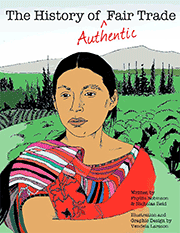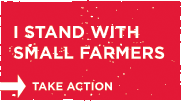Last week, a group of us visited one of Equal Exchange’s coffee farmer partners in Chajul, Guatemala in the Department of Quiche. The following 6-minute video was made by Jeanie Wells, Co-operative Trade Specialist, following the trip.
Posts Tagged ‘small farmer coffee co-operative’
Guatemalan Heroes
Posted in Uncategorized, tagged Asociacion Chajulense, small farmer coffee co-operative on March 23, 2010| 3 Comments »
In Their Own Words: Equal Exchange’s Co-op Partners Reflect on Their Visit to Mexico – Part II
Posted in Uncategorized, tagged CESMACH, food co-ops, small farmer coffee co-operative on July 27, 2009| 7 Comments »
In March, a group of seven representatives of various food co-operatives across the country joined three Equal Exchange worker-owners on a trip to Chiapas, Mexico to visit one of our coffee farmer partners, CESMACH.
Many of them have written about this experience and have offered some very interesting perspectives on coffee farming, the CESMACH co-operative of small scale organic farmers, the role of consumers and food co-operatives, and Equal Exchange’s partnership s on both sides of the supply chain.
You can read the first few articles published (and see some great photos) here.
Today, I’d like to share with you two additional articles that have since been written about the trip; each one offers a different perspective and unique insights into a trip that brought new respect, admiration, friendships, and deeper levels of commitment to coffee farmers and visitors alike.
Stephanie Catlett, Marketing Coordinator of New Pioneer Food Co-op in Iowa City, Iowa published this article in the Summer issue of their newsletter, Catalyst.
And, Kathy Piedl, Wellness Manager, at Hungry Hollow Co-op, in Chestnut Ridge, NY published this article in the Spring/Summer issue of the Hungry Holler.
Hungry Holler Spring 2009 final
Let us know what you think!
Not just coffee (sugar… cacao… marmalade…& handicrafts). Innovative Fair Trade co-op launches new eco-tourism project in Peru!
Posted in Uncategorized, tagged CEPICAFE, eco-tourism, Peru, small farmer coffee co-operative on May 6, 2009| Leave a Comment »
“Once again, it has been shown that together, we farmers are capable of achieving anything we put our minds to; and that by maintaining ourselves organized, we can take actions toward our own development.” Santiago Paz, former General Manager of CEPICAFE

In 1997, Equal Exchange began buying coffee from a small co-operative in northern Peru. We were the second company to purchase coffee from CEPICAFE, the Peruvian Association of Coffee Growers, and the first to loan them pre-harvest financing. At the time, we bought 2 containers of their coffee. Our relationship has grown through the years. Their former General Manager, Santiago Paz came to Equal Exchange to study English for three months to help him navigate the international business market. Our West Coast office has brought at least three groups to visit the small scale farmers in Piura and Montero. Likewise, CEPICAFE ‘s staff and farmer members have been to the United States many times to visit Equal Exchange, and travel to different natural food stores and interfaith congregations with whom we work. In this way, they have learned about the U.S. consumer market, spoken at conferences and events, and attended quality trainings and exchanges.
It’s been a close and important relationship for those of us at Equal Exchange and for CEPICAFE. In the words of one of CEPICAFE’s founders, Arnaldo Neyra Camizan: “Equal Exchange is our most important importer. They don’t refer to us as coffee generators, but call us their strategic partners. Through Equal Exchange’s help, our members are converting from small-scale farmers to small-scale business people.”
Recently I found an article from 2002 that Arnaldo wrote in CEPICAFE’s bulletin, La Flor del Café (the Coffee Flower) in 2002 and it made me think about how far we’ve all come since those days. * At the time, CEPICAFE was struggling to sell a few containers of coffee at Fair Trade prices. Today, Equal Exchange buys 10 containers of high quality, organic coffee at above market prices. The co-op is world-renowned for their coffee and has since built their own processing mill and has added sugar, cacao, marmalade, and crafts to their repertoire of Fair Trade products which they export to the U.S., Europe and Japan.
The last time I visited the co-operative, their office was crowded with visitors from different countries, all wanting to visit the farmers, support projects, and learn about Fair Trade. CEPICAFE was hosting a two-day conference for small scale farmers and non-governmental organizations from all over Peru; people wanting to learn about their history, study their model and replicate their successes. At the time, the staff told me that they were hosting so many visitors, that they had decided to launch an eco-tourism project where tourists could stay with farming families, enjoy themselves in the Piuran Sierra, learn about Fair Trade and participate in the coffee, sugar, and cacao harvests.
We’re proud to share this pamphlet which describes their eco-tourism project now fully off the ground. For more information about Cepicafe, visit our website. To inquire about their eco-tourism packages, visit their website. To read theirbrochure which provides all the information about their program and how to visit, click here.
* “The Little Window Became a Great Door: How Fair Trade has helped CEPICAFE”
by Arnaldo Neyra Camizan (former President of CEPICAFE)
The little window [of Fair Trade] became a tremendous door for the small-scale coffee producers of the Piuran Sierra. The opportunity to place our coffee in markets that, in addition to offering a fair price, also demand quality coffee, was a determinant in helping CEPICAFE gradually improve our market competitiveness.
Establishing relationships with importers such as GEPA of Germany and Equal Exchange of the USA, among others, importers who are known for the high quality of the coffee they sell, was a calling card for CEPICAFE. Other importers, then became enthused to establish commercial relationships with CEPICAFE. These early relationships enabled us to facilitate other business transactions with few difficulties. The relationships are based on the dual criteria of quality of the coffee, and seriousness of the organization.
CEPICAFE sales growth in markets that pay better for its product, and the pre-harvest financing that it receives from its importers, permitted us to offer services to our members, such as sustainable credits. In this way, we have helped to alleviate the problems of families who before that to sell their coffee in advance at low prices, in order to buy food or school supplies. The families also worried about how their children would be able to study. Before the existence of CEPICAFE, there were very few parents who could send their children to pursue higher education at the Institutes or the University. Today [in 2003], 20 members have children in different faculties of the National University of Piura. These future professionals, and those who will follow in the future, will be the ones who will be in charge of consolidating the necessary development in the Piuran Sierra that until very recently, had been entirely overlooked.
CEPICAFE’s relationship to Fair Trade has also served to help families slowly improve their system of production, whether it’s diversifying their agricultural income or investing in infrastructure. In the beginning of CEPICAFE’s work, there was no infrastructure, such as depulping equipment, drying patios, etc. Today, the majority of the members have this infrastructure, which serves both to guarantee the quality of their coffee, and to strengthen their relationship to the market.
In addition to these examples, there are many other examples of the impact of Fair Trade on the Piuran Sierra. However, in our view, one of the greatest achievements is the possibility of self-development that is embedded in this experience. The arduous work of capacity-building that has been done through countless workshops, classes and exchanges, together with the creation of a sustainable relationship with the market has served to give the different organizations, prestige, negotiating power and the capability of putting forth our own solutions in each zone. For this reason, the coffee-growing municipalities have signed cooperation agreements with CEPICAFE to share the costs of technical assistance and infrastructure, and are advancing in the construction of a common development vision. This is the basis of a sustainable development project.
After the whole process of the annihilation of coffee producer organizations in the region, the only association that still exists is CEPICAFE. CEPICAFE has succeeded in positioning itself to be able to negotiate before public and private institutions that are working in the Sierra. In this way, this little window that Fair Trade represents has served to help families who were previously entirely overlooked, to feel the first steps of a real development proposal. These are the successes of Fair Trade.




